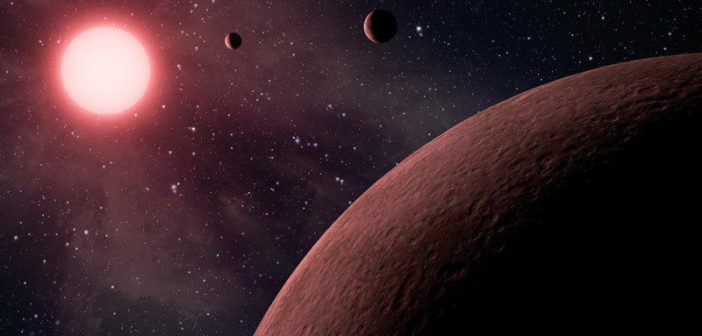There’s a new batch of worlds and a new branch on our galaxy’s planet family tree. NASA’s Kepler space telescope team has released 219 new planet candidates. Meanwhile, analysis of Kepler data has revealed a divide between planets about Earth’s size and slightly larger mini-Neptunes.
Kepler finds planets by watching their stars. As a planet moves between its star and the telescope, the light from the star dips. As the planet continues to orbit, the light continues to dip regularly as the planet repeatedly passes in front of its star.
This new release brings Kepler’s total count to 4,034 exoplanet candidates. About 50 of those candidates, included the 10 just added, are both Earth-sized and in the habitable zone. “This carefully-measured catalog is the foundation for directly answering one of astronomy’s most compelling questions – how many planets like our Earth are in the galaxy?” said Susan Thompson, a Kepler scientist at the SETI Institute in Mountain View, California in a press conference.
To further clarify that question, Benjamin Fulton at the University of Hawaii in Manoa and his colleagues used the Keck Observatory in Hawaii to take additional observations of the stars hosting 2,000 Kepler planets. Since the size of the dip in a star’s light corresponds to the size of the exoplanet relative to its star, measuring the stars’ sizes more precisely allowed them to pin down the radii of the planets.
They found that small planets in the Milky Way were split nearly evenly into two groups: rocky worlds up to 1.75 times the size of Earth, and gas-enveloped worlds just smaller than Neptune, about 2 to 3.5 times Earth’s size. From 1.75 times as big as our planet to twice as big, they found almost nothing.
“We like to think of this study as classifying planets in the same way that biologists identify new species of animals,” Fulton said at the press conference. “Finding two distinct groups of exoplanets is like discovering mammals and lizards make up distinct branches of a family tree.”
These two branches could begin to split when an Earth-sized planet somehow snags enough hydrogen and helium gas to boost its radius like an inflated balloon and make it a mini-Neptune. If it had just enough gas to place it in the gap between the two families but not quite enough to put it firmly in the larger group, that gas would probably be burned off or blown away by radiation from its star.
So even if an exoplanet did somehow end up in that gap, the researchers say it wouldn’t stay there for long.




